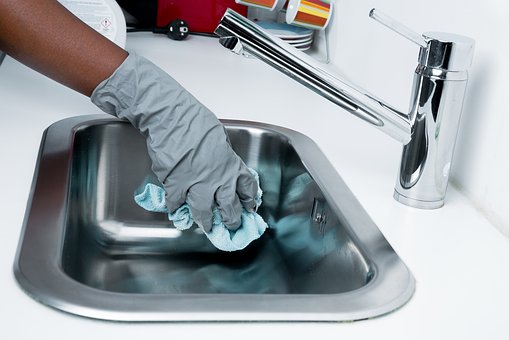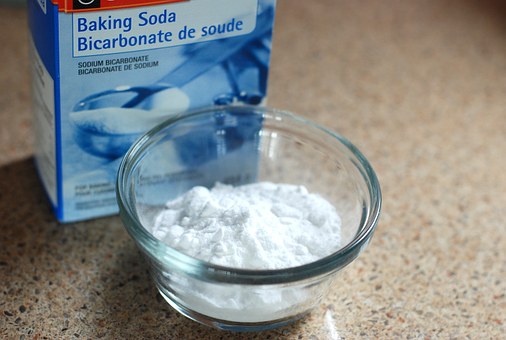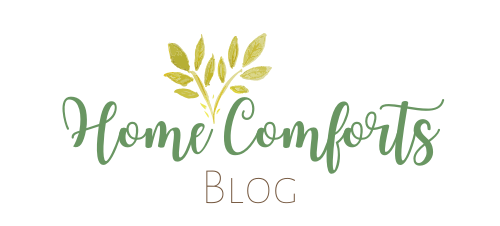Our home is considered our sanctuary, our place to rejuvenate the body and mind. But did you know that your home has hidden poisons. It’s not just the food we eat, and our hygiene products (both also equally important) but the products we use to clean our homes are filled with toxic chemicals. The average home is exposed to roughly 500-1,000 chemicals.
If our house or apartment is free of toxins then the body rests, heals, and recuperates.1
Scientists are directly linking the alarming rise of degenerative disease in America to exposure to chemicals in our homes and workplaces. Consider that the American Cancer Society states that as of 2018, one in three men and one in two women will have cancer in their lifetime. After accidents, cancer is now the second leading cause of death in children and exposure to chemicals in our homes is a leading factor.2
Most vulnerable are children and senior citizens. Children, because their developing systems can’t handle the toxic burden and seniors because of their declining immune systems can’t fight off a toxic overload. Anyone suffering from a chronic disease will also be affected.
You’ll be surprised to learn that some of the leading brands of household cleaners and detergents are the worst offenders.
To see how your brands rank, check out EWG’s consumer guide here.

Read Labels and Avoid These Chemicals In Your Home Cleaning Products
The primary chemicals which disrupt hormones, set up a breeding ground for cancers or create asthma and lung problems include phthalates, Parabens, Triclosan, Diethanolamine, Formaldehyde, Sodium Laureth Sulfate. For more detailed information on each of these chemicals, see The Green Guide .
Another red flag ingredient to watch for is “fragrance.” This is a cover for more chemicals. How do you think they create those great fragrances like honeysuckle, green apple or vanilla dreams? They use a bevy of chemicals to create these scents. Many manufacturers don’t provide full disclosure, often its because its their proprietary blend or trademarked blend of chemicals. If they cloak chemicals under fragrance, choose a product that offers full disclosure.
Toxic Chemicals in Detergents
You wash your clothes, personal garments, bedsheets in detergents that can actually increase your toxic load. These are all items that you inhale or come in contact with your skin for long periods of time. The last thing we need is to breath and ingest more chemicals.
Many detergents contain napthas, (These are solvents used to dissolve dirt, grease and grime) which have been linked to cancer, lung damage and mucous membrane damage. Fragrance ingredient can contain as many as 200 undisclosed chemicals in detergents. Fragrance free is not a guarantee of chemical free detergents.
Chemicals In General Household Cleaners
Unlike cosmetics there is no requirement that companies list the ingredients in household cleaning products. As a result, companies can use highly toxic chemicals and consumers have difficulty finding low hazard products. The use of vague ingredient descriptions like “surfactant,” “cleaning agent,” or “preservative” on cleaning products does not provide adequate hazard data for consumers on what chemicals they are putting in their homes. (https://www.ewg.org/guides/cleaners/)
Natural Cleaning Alternatives
Use EWGs guide to help you source safe alternatives. See their list of top-rated products for your home here.
You can also make your own.
One of my favorite glass cleaners and general cleaner is made with Tea Tree essential oil, Lemongrass essential oil and water. Fill a small spray bottle with water and add 3 to 5 drops of each essential oil. Shake well and use it to clean surfaces and for dusting. For a deeper clean, add juice from two lemons instead of Lemongrass essential oil. Be sure to buy your essential oils from a reputable manufacturer. Some oils are not pure and contain chemicals as fillers or fragrance.
Cleaning with Vinegar is also a great alternative. I don’t like the smell of vinegar so I infuse it with herbs or lemon peels. Read more about infusing your vinegars here.

I use Arm & Hammer baking soda as an abrasive to clean pots, pans and my stove top. It requires a little bit more elbow grease but it gets the job done. Once done, rinse or wipe down with water to remove any residue.
Vinegar also works well as a cleaning solution. Vinegar’s acidic nature makes it easy to remove stains. It’s also a disinfectant. Best not to use on carpet as it may cause discoloring. Use a non-GMO brand to use as a cleaning agent.
How to Remove Toxins And Odors From Your Home Air
You can also use the juice of a lemon to clean with or simply cut a lemon in half. Use the cut lemon as a scouring pad. It cleans and disinfects.
To clear out odors, improve ventilation by opening windows and using fans. Baking soda is good at removing odors and spritzes of lemon or any citrus fruit freshen air. Wooden cedar blocks, pure essential oils, or sachets of natural dried flowers or herbs (such as aromatic roses, lavender, and lemon verbena) provide gentler fragrance. Source: (https://www.organicconsumers.org/news/how-toxic-are-your-household-cleaning-supplies)
Another option to remove odors, chemical fumes and toxins in the home is the use of Zeolite. Zeolite is a one hundred percent nontoxic, naturally occurring mineral found near volcanic activity. What makes zeolite unusual is that it is the only mineral that is an ion exchanger in its natural state, which means it naturally absorbs pollutants from the air.
It can absorb ammonia from water and clear an entire house of severe smoke damage in three days. To do this without the use of toxic chemicals or ozone generators is almost unheard of. 3
It is claimed that zeolite will also extend the shelf life of fruit and vegetables when used in the refrigerator or freezer for as long as three weeks. Zeolite also “de-sorbs.” Just put it in the sun, the absorbed fumes will dissipate, and you can use it again and again.
Himalayan Salt Lamps work equally well to remove toxins from the air. For more information on how the salt lamps work, read Use Himalayan Salt Lamps To Purify Home Air.
Baby steps. Don’t try to eliminate all the toxic products all at once but rather make small changes to improve your home environment. Create the healing environment that you and your family deserve.
Resources
1Berthold-Bond, Annie. Clean and Green: The Complete Guide to Non-Toxic and Environmentally Safe Housekeeping (Kindle Locations 243-244). Ceres Press. Kindle Edition.
2(https://www.organicconsumers.org/news/how-toxic-are-your-household-cleaning-supplies)
3Berthold-Bond, Annie. Clean and Green: The Complete Guide to Non-Toxic and Environmentally Safe Housekeeping (Kindle Locations 488-497). Ceres Press. Kindle Edition.
https://www.ewg.org/guides/cleaners/content/faq#q12


Great tips! We avoid toxic cleaning products and make most of our own. Zeolite is something I’ve never heard of though. I’m definitely going to check into it!! Thanks for sharing!
Thank you Emily. I also just learned about Zeolite. I visited your blog and see we blog on similar topics. Lets stay in touch.